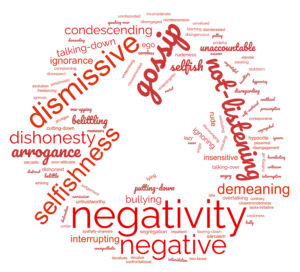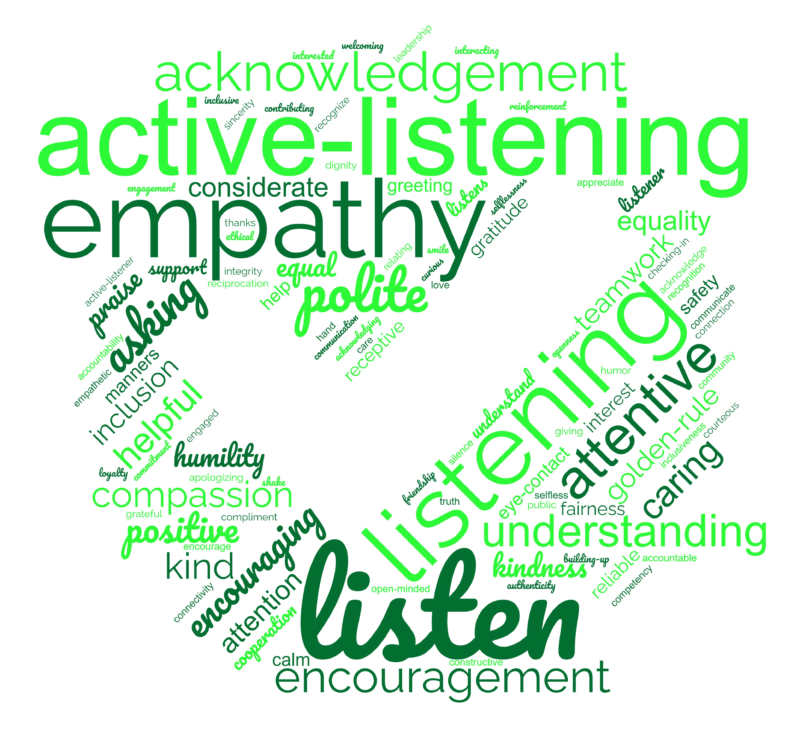Word Pictures and The Universality of Respect (and Disrespect)
First Responder clients are relatively common in my work. We provide training in Respectful Workplace behaviors, which is not always easy in their line of work. Emergency crews work with people in distress and who may behave poorly, but the first responders have a responsibility to stay cool and practice respect, no matter what the circumstances.
I witness how First Responder organizations proactively create a venue and the opportunity for healthy conversations about respect in the workplace; what respect should and should not sound or look like.
Regular conversations around respect keep respectful behaviors prominent in our thinking and actions.
Word Pictures
Our trainers employ word pictures to help participants see respect differently and generate helpful dialogue.
Our RESPECT Word Picture has two columns. One column contains behaviors titled “Needs Work.” In this column, we identify behaviors that represent negative examples of respectful behavior. The other column is the “Great Work” column, and here we list the positive behaviors associated with respect.
We can liken them to Below Expectations and Exceeds Expectations or the behaviors that detract from a positive workplace and those that add to it.
The magic happens when you invite your team members to create the Word Pictures.
Team Creation
Rather than saying to your team, “Here is a list of expected behaviors for our workplace and those deemed unacceptable”, you involve the team in constructing the Word picture. You give each person ownership, authorship, and some “skin in the game.”
Using different colored cards, the group members write descriptions of respectful and disrespectful behaviors. We then take the collection of positive descriptors and populate the “Great Work” column with their suggestions, likewise the negatives in the “Needs Work” column.
Word Pictures describe behaviours that can be seen. They are visible gestures and behaviours that one can observe and measure.
The litmus test of your team’s Word Picture accuracy is this: give the completed list to a stranger who knows nothing about your workplace culture. The observer should, just by watching, ably identify which members of your team are showing “Great Work” and which members fall into the “Needs Work” column.
Endowment Effect
When you invite the team to complete their own Word Picture, the Endowment Effect kicks in.
The Endowment Effect eventuates when people participate in creating something, and consequently, ascribe to it a higher value.
Your team members don’t feel that they are submitting or consenting to a policy written 3000 miles away by people removed from their daily experience. Instead, the team created the guidelines, their manifesto of respect, for themselves. In essence, a Word Picture becomes an accountability tool!
Picture this: You show up at each team member’s doorstep on January 1st with a list of New Year’s resolutions for them to follow. Ridiculous, right? We know that people invest their energy in what they decide is best for them.

Word Clouds
Recently we delivered sixteen half-day workshops, and I conducted the Word Picture exercise in each of them.
With so many sessions, familiar themes emerged on universal ideas about Respectful Behaviours and what they thought were Disrespectful Behaviours.
If you conducted the same exercise in your workplace, the answers would be the same or very similar.
We built Word Clouds from the results of the exercise.
When crafting Word Clouds, I learned that the more times a word is entered into the data during the construction of the cloud, the more prominent the word appears.
The results, shown here in graphic form, demonstrate the Universality of Respect (and Disrespect).
Broken Windows Theory
In our workshops, we also use the Broken Windows Theory.
Broken Windows theory states that any visible signs of crime and civil disorder, such as broken windows (or similar indicators that people don’t seem to care about a neighborhood), create an environment that promotes more negative behavior.
In training, I compare the “Needs Work” column of behavior as similar to broken windows. If it’s not dealt with or left ignored, another broken window may soon appear, then another, and another.
Before long, that behavior becomes the norm.
From there, it’s a tiny step before we see bullying and harassing behaviors.
Target Hardening
Crime Prevention organziations refer to Target Hardening when describing proactive rather than reactive approaches to prevention.
You are less likely to have even the FIRST broken window using target hardening.
Regular and healthy conversations encouraging dialogue in the workplace are key.
We share our expectations of workplace behavior, ensure the workplace is brimming with role models (leaders) who demonstrate the behaviors, and finally, should something unacceptable occur, address and respond to disrespect as soon as it is noticed.
It starts with defining what that is for your workplace.






